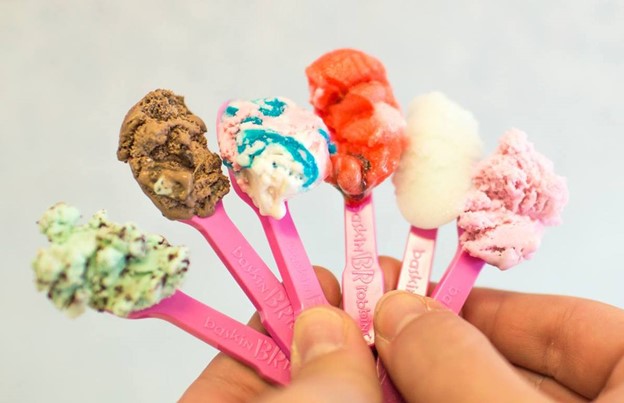Pink Spoon Model

Do you want others buy what you’re selling?
Sometimes you have to give away a little bit of what you make in order to convince people to buy more of what you offer.
We can call this the Pink Spoon model, named for the little pink spoons that #Baskin-Robbins uses to hand out samples of their ice cream.
You don’t pay for the spoon or the ice cream on that spoon, at least not directly.
Yet if it weren’t for that sample, how would you know if you like the provocatively named Love Potion #31 (which I looked up: “white chocolate and raspberry flavored ice creams, a raspbery (sic) swirl, chocolate flavored chips, and raspberry-filled chocolate flavored hearts”).
I don’t know how much those pink spoons and samples cost, or what the ROI is. But isn’t it nice to know that you can minimize your risk?
And if you don’t like the dangerous sounding Wild ‘n Reckless Sherbet or the esteem-raising but inscrutable Gold Medal Ribbon flavor (“the champion of flavor”!) you can still get good ol’ Rocky Road or a chocolate shake?
You can even walk out and not buy anything… but you’ll come back next time. That’s the long-game plan.
This applies to more than just ice cream. This happens all the time in the “freemium” model, described by Vineet Kumar in #HBR as getting “basic features at no cost (with) richer functionality for a subscription fee.” That means that if you create content or provide a service, the pink spoon also applies.
Sometimes you won’t know until you try. The pink spoon allows customers to try. And then they’ll know.
What do you think?
See you tomorrow!
